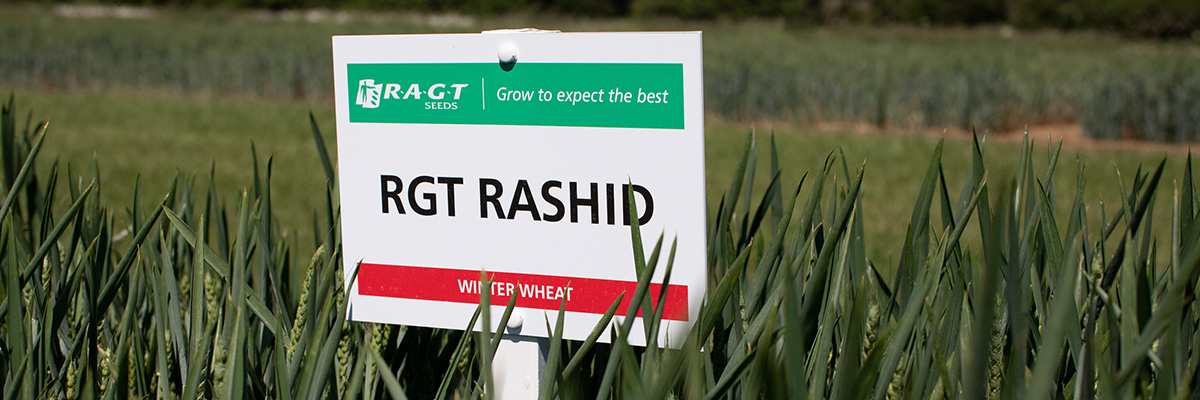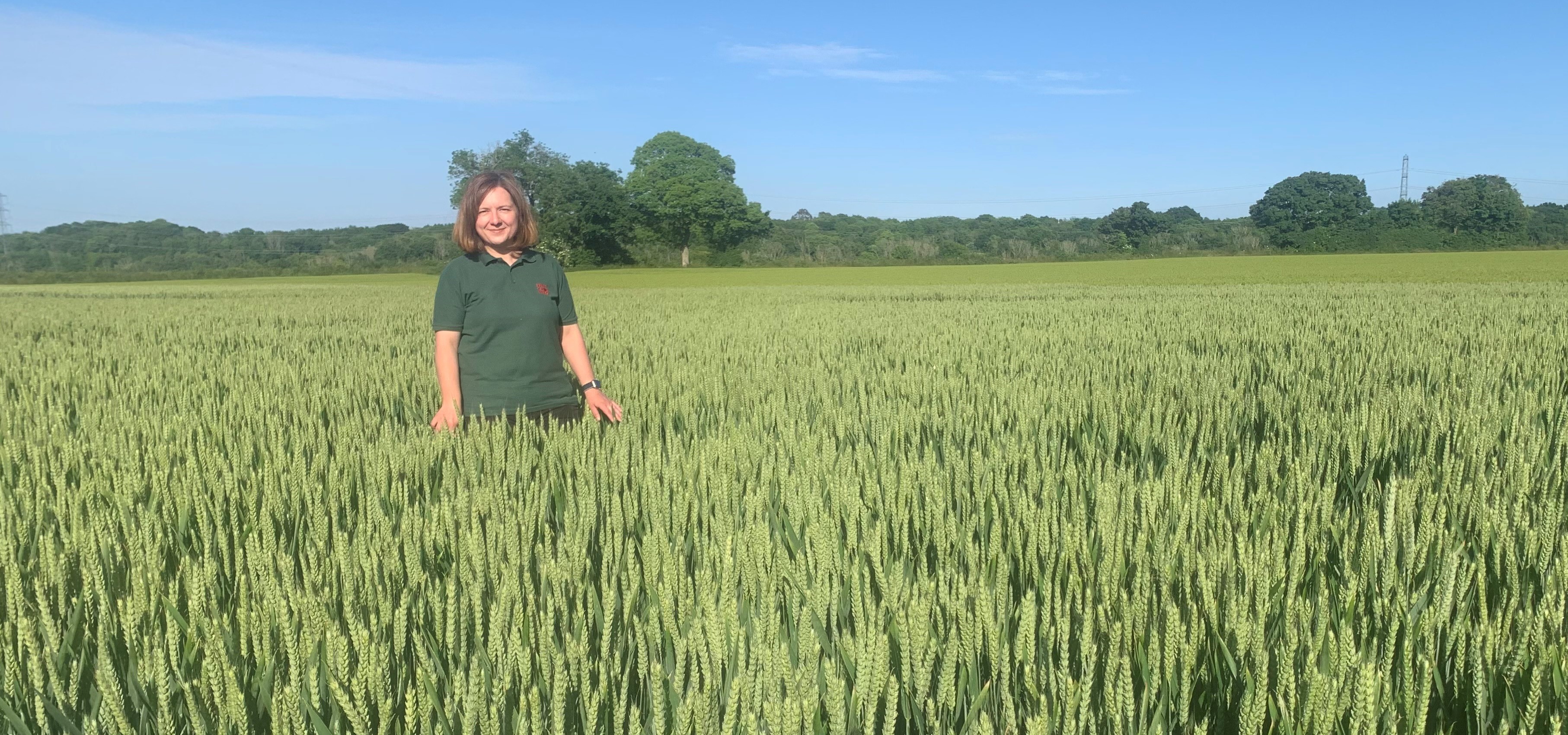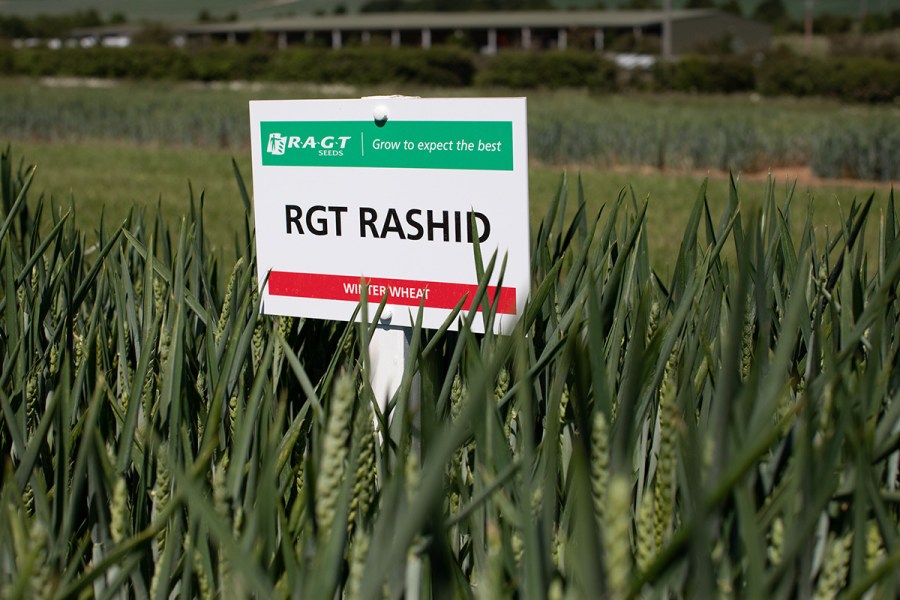
What do biscuits and cricket have in common? They could be said to be quintessentially British and RAGT has married these two entities in its latest Group 3 wheat, RGT Rashid. CPM has prime seats to Rashid’s test match debut to determine its skills.
It’s basic breeding mechanics – the more diverse the cross, the more chance of avoiding a problem.
By Melanie Jenkins
Those observant of AHDB’s Recommended List (RL) will be well aware that the Group 3 category is on the brink of overflowing with options. This might seem surprising considering the Group only accounts for 10% of the wheat market, yet the hard feed Group 4s account for 50% and there are nearly as many Group 3s on the RL, according to James Barlow of ADM.
“We just don’t need this many recommended Group 3 varieties. It creates a muddled picture for growers to know what makes a good biscuit wheat,” he says. But, despite his thoughts on the overcrowded nature of Group 3, James feels that Rashid thoroughly deserves its place on the RL. “Rashid is up there with LG Astronomer, which I think will be the biggest biscuit wheat of the year.”
David Schafer, wheat breeder at RAGT agrees with James. “The Group 3 market is in flux again, with quite a few varieties on the RL, but very few that anyone would be growing due to disease pressures.”
But the difficult thing is that Rashid is in the middle to lower half in terms of yield order, says James. “But the higher yielding varieties have some issues, be it lower septoria resistance or specific weight. As an integrated buyer, ADM needs wheats that are the right quality for biscuit making flour as well as those that will perform on farm, and Rashid fulfils these attributes. Its quality and yield are good enough and its agronomics are probably the best in Group 3.”
Rashid’s strongest yields were actually in the East region where it outyielded all other Group 3 lines in that area, according to David.
But for some growers Group 3, as a whole, may have lost appeal in recent years, according to Andrew Bourne of T Denne and Sons. “This is partly because buyers haven’t been paying a premium and because breeders haven’t been able to keep yield potential at the same level as they have with Group 2 and 4 varieties. On top of this, the buyers for Group 3s have moved from the South East and London areas to the Midlands, meaning the cost of sending wheat to domestic homes has increased, so growers are relying more on the export market.”
So how does Rashid differ from the rest of the Group 3 varieties, and will it appeal to growers? Rashid is a three way cross of Icebreaker with Solo which was then crossed with Cougar, according to Lee Bennett of RAGT.

Lee Bennett says Rashid has really good resistance to sprouting, a trait he feels is important to farmers.
ADM had to rethink the soft wheats it promoted last season after the isolate change in septoria which affected a lot of Cougar crosses, explains James. “Cougar is a vastly used parent in soft wheats and though there’s definitely been a change in Cougar’s resistance to septoria, I would advise growers not to dismiss varieties with it as a parent – varieties without it aren’t necessarily coping better and are often fairing worse.”
Anelia Podskoknieva of T Denne and Sons agrees that Cougar crosses have had a lot of bad press over the past few years and feels that though some of the disease resistance breakdown can be attributed to Cougar genetics, both environmental factors and management practices have also played their part. “We view a three-way cross variety – like Rashid – as having more genetic diversity. It’s basic breeding mechanics – the more diverse the cross, the more chance of avoiding a problem.”
James likes both Rashid and Astronomer for this reason. “We’re seeing varieties with diluted genetic diversity – reducing Cougar genetics to 25% – and increased genetic diversity able to better deal with septoria.”
Additionally, Rashid’s septoria resistance came through the 2021 season favourably, says David. “This leads us to believe that it does have a good level of resistance to the disease.”
And it’s not just septoria resistance Rashid has in its arsenal, says Lee. “The key thing about Rashid for me is its agronomics – it’s so clean of disease. There’s no issues with yellow rust and it has great fusarium resistance.”
The other aspect of Rashid that Anelia likes is that it has Orange Wheat Blossom Midge resistance. “This really is quite a big plus as it’s one of those characteristics growers may have forgotten about over the past few years, but having it does bring value and peace of mind. It’s a useful selling point for any variety.”
According to Lee, Rashid has really good resistance to sprouting, a trait he feels is important to farmers. “It’s in the top three of all varieties on the RL.”
The variety’s growth habit is suited to an early to main sowing situation, but its low vernalisation requirement gives it extended suitability to those wishing to drill after November. Rashid works across all soil types and works well in a second wheat position, adds Lee. “I struggle to pick a hole in it unless you want a really early harvest.”
According to David, the variety is a steady grower, with a semi prostrate manner during the early growth period. It then grows steadily through spring and summer and is a strong tillering type. It’s short to moderate in height with good straw.”
Rashid is late to develop and has late maturity, says James. “This means it might not suit some growers, but for others it will add a spread of maturity dates across their wheat area.”
Anelia believes Rashid’s underlying grain characteristics to be quite interesting. “The variety has a decent specific weight and Hagberg and from what we’ve seen, it’ll hold its quality in a delayed harvest situation. Compared with some other varieties, Rashid brings a bit of comfort to growers.”

Anelia Podskoknieva likes that Rashid has Orange Wheat Blossom Midge resistance.
For David, Rashid’s main trait is its biscuit quality. “It’s met all of the official specification requirements for a biscuit wheat.”
And though the Group 3 market may have lost some growers in recent years, Julius Deane of Carrs Group, believes there’s plenty of demand from end users. “There’s a huge demand for biscuit flour in Scotland, where they need good quality soft varieties for shortbread.”
And though Rashid only has a provisional suitability for distilling, Julius feels there’s favourable potential for it already. “In the north, biscuit wheat is also used in distilling and can be used for bioethanol – the bigger factories have a lot of capacity for it. There’s capacity for about 1M tonnes of biscuit wheat but a further 3M tonnes of wheat can go for bioethanol. There’s demand now and it will continue, but whether demand increases does depend on politics.
“And though millers want particular varieties for making biscuits, any variety can go into bioethanol production,” he says.

There’s a huge demand for biscuit flour in Scotland, according to Julius Deane.
Millers are known to be cautious about new wheat varieties, but Julius is confident in what he’s seen of Rashid. “We want varieties that have consistent quality and are reliable year-on-year. Millers want varieties with good specific weight and that have big, bold, blobby grain for starch. Ideally 77-78kg/hl and although protein and Hagberg are less important than for bread wheat, these should be around 10.5% and 180 seconds, respectively.
“The factors which are really important are its rheology – resistance – and extensibility,” explains Julius. “Resistance is the toughness, which wants to be low, and extensibility is the stretchiness of the gluten so the biscuit will stay in shape. Rashid is suitable in terms of both of these properties.”
Anelia is particularly happy that end users have already been able to try enough of Rashid to know it makes a good biscuit flour. “All too often, good looking varieties come to market with end users having very little experience of how the variety performs in their process.,” she says. “For us, having good, solid data from end users was really important with our decision to support Rashid over other varieties.”
Growers wanting to try Rashid this year will want to pin down their order as soon as possible, warns James. “Seed supply is incredibly limited, so growers need to get their name down for some now if they want to try it.”
Lee concurs: “This is the first year of commercial seed, so it’s early days. There’s sufficient seed to take 1% of the Group 3 market this year and if we could hit 2-3% in time, I’d be very happy. But this year, Rashid will be hot property as there’s not enough seed to go around.”
No chinks in its armour
Rashid has been grown as a seed crop for the past two seasons by Will More of R J More and Partners near Great Yarmouth, Norfolk. The 325ha all-arable enterprise grows wheat for seed and feed, winter malting barley, sugar beet, oilseed rape and vining peas.

Will More found Rashid very straightforward to grow and it yielded 10.3t/ha which he was very pleased with.
“We’ve got varying soil types but the majority is a medium sandy loam classified as Wick 2. There’s also a proportion of heavier loam clay on the marsh level which is cropped with continuous wheat,” explains Will.
Because of this Will generally operates two approaches to his wheat crop. The Group 4 feeds are grown on the lowland marshes and then seed crops are grown where they’re best suited to.
Having grown for RAGT for a number of years, when approached about Rashid Will offered the firm some double-break land in 2020. “This had a good, clean profile to work which suited the scenario and acreage of the variety at the time.”
Rashid went in behind vining peas after the field had been deep subsoiled to 46cm. The crop was drilled in late September using a power harrow combi drill. “We attempted to just disc the ground but had to plough some of it because of the weather,” adds Will.
Following establishment, a pre-emergence herbicide of System 50 (flufenacet) and Clayton El Nino (diflufenican) was applied. “This is standard on farm as we don’t suffer from a heavy blackgrass infestation.
“We then had a tricky winter with an inordinate amount of rainfall,” says Will. “Under the circumstances Rashid did perform pretty admirably.”
The crop had phosphorus and potassium 0-15-30 in November and then in early March it had 50kgN/ha of nitrogen and sulphur, followed by 100kgN/ha in late March. A further split of ammonium nitrate – targeting 70kgN/ha – was then applied in mid-April.
“Rashid got off to a slow start because of the weather but it picked up rapidly when it had its first dose of N,” says Will. “It tillered well and had some decent rapid growth.”
The Rashid had a robust fungicide programme, with a triazole and Mojave (folpet) plus chlormequat at T0. The T1 at the end of April consisted of Revystar (fluxapyroxad+ mefentrifluconazole), more chlormequat and some manganese, explains Will. At T2 – in mid to late May – Myresa (mefentrifluconazole) and Syrex (fluxapyroxad+ pyraclostrobin) were applied, along with a herbicide – Biplay SX (metsulfuron-methyl+ tribenuron-methyl). Finally, at T3 in mid-June, Decoy (prothioconazole), Syrex and Tesoro (tebuconazole) were applied.
Rashid grew well through to harvest and though the area can be susceptible to septoria, there were no major disease issues in the crop. “It was very straightforward to grow and yielded 10.3t/ha which we were very pleased with. Our seed average is 10t/ha but the past few years have skewed that due to the late drillings – taking us to an average of 9.5-10t/ha,” he says.
Will grew Rashid again this year, but as a second wheat. “We did stubble cultivations with a Vädertad Carrier cultivator after harvest, then another pass before going in with the plough in mid-October and drilled straight behind with a Väderstad Rapid disc drill,” explains Will. “We had excellent establishment conditions – good moisture and tilth – so the seed went in well.”
The seed had Latitude (silthiofam) and Redigo Pro (prothioconazole+ tebuconazole) dressings plus Clayton Sabre (flufenacet+ diflufenican) and El Nino as pre-ems.
In mid-February the crop had 50kgN/ha as nitrogen sulphur, followed by ammonium nitrate in mid-March at 100kgN/ha. “As a second wheat, the Rashid then had 90kgN/ha as the last split at the beginning of April,” says Will.
“We didn’t apply a T0 as there was no need, so we went in with a T1 in mid-April, consisting of Myresa plus Syrex, Arizona (folpet), chlormequat and manganese. At T2 in mid-May, it had a top up of Syrex, Aquino (fenpicoxamid) and Starane (florasulam+ fluroxypyr) herbicide as well. We’re now about to go on with a T3 which will be Prosaro (prothioconazole+ tebuconazole).”
The crop had a little septoria but Will found it completely manageable. “Obviously, it’s been a yellow rust pressure year, but Rashid has really held its own, especially in comparison to other varieties which have shown vulnerability to the disease and now have chinks in their armour.”
Will really likes Rashid’s disease resistance and strong growth at emergence. “We were very pleased with it last year and this year’s crop is looking good at the moment.”
RGT Rashid at a glance
| Yield (% treated controls) | |
| UK treated | 100.1 |
| UK untreated | 79.2 |
| East region treated | 102.1 |
| West region treated | 97.1 |
| North region treated | [97] |
| Grain Quality | |
| Protein content (%) | 11.1 |
| Hagberg Falling Number | 225.6 |
| Specific weight (kg/hl) | 76.4 |
| Agronomics | |
| Resistance to lodging without PGR | 7.6 |
| Straw height without PGR (cm) | 85.9 |
| Ripening (+/- Skyfall) | +3 |
| Disease resistance | |
| Mildew | 4.1 |
| Yellow rust | 7.7 |
| Brown rust | 5.6 |
| Septoria | 6.9 |
| Eyespot | [4] |
| Fusarium ear blight | 6.7 |
| Orange wheat blossom midge | R |
Source: AHDB Recommended List, winter wheat 2022/23 – [] = limited data.
This article was taken from the latest issue of CPM. For more articles like this, subscribe here.




